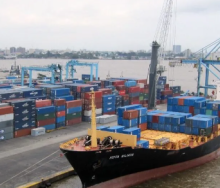Globally, consumers have increasingly embraced technology and shifted to e-commerce since the Covid-19 pandemic, resulting in rising demand for the transport of goods.
Justin Manson, sales director at Webfleet South Africa, believes this shift presents a significant opportunity for existing and emerging transport companies.
According to Statista, revenues in the worldwide e-commerce market are projected to reach around US$3.18 trillion (R59.34 trillion) by the end of 2024. The annual growth rate in the next few years is expected to be 9.47%, reaching revenues of $5 trillion (R93.3 trillion) a year from 3.2 billion active users by 2029.
This represents population penetration of 44.4%, up from 36.6% in 2024.
“These rate estimates may be moderate, given the anticipated exponential advancements in efficiencies and productivity driven by artificial intelligence across various sectors, including energy, manufacturing and transportation,” said Manson.
He said aspiring transporters must grasp the factors driving the rapid growth of e-commerce, including new ways of working, emerging technology, consumer behaviour and decreasing technophobia across age groups.
“Freighters need to remain vigilant and stay updated on the latest technological advancements that influence e-commerce, such as AI-driven personalisation, blockchain for supply chain transparency, and augmented reality (AR) for immersive shopping experiences.
“They need to be aware of these innovations to adapt their services accordingly and offer value-added solutions to e-commerce businesses.”
Manson added that the digitisation of the economy, coupled with the adoption of smart technology in vehicles, rendered traditional business practices obsolete.
“The emergence of user-friendly apps that can simplify starting and managing an online business makes it accessible to entrepreneurs and small businesses. The involvement of financial institutions further democratises e-commerce, ensuring it is no longer exclusive to large retailers.
“Transportation alone is no longer enough, operators must uniquely differentiate themselves. While some may emphasise scale, others can offer promotions in partnership with retailers, commercial (product) insights, regular newsletters or subscription services. The possibilities are endless and limited only by available tools.”
Delivery was no longer about speed, Manson added, as personalised care regarding business and customer information was crucial.
“Forward-thinking transporters conduct additional research on target areas’ planned development or provide real-time updates on road works to offer real-time communication to customers. A customer may be willing to wait a few extra days, knowing that a transporter has communicated about potential disturbances, like social unrest,” said Manson.
“The day when every aspect of public and private infrastructure is digitised is fast approaching, where vehicles talk to each other and the surrounding environment in real-time. There is already an enormous and ever-expanding repository of data collected through GPS-powered apps, mapping solutions and even businesses themselves. Accessing and maximising this data enables transporters to be more than just couriers; they become advisers.”
Manson said an expanding range of telematics tools and data was already powering large fleets but these cost-saving solutions were also available to smaller operations, including solo entrepreneurs running just one vehicle.

Justin Manson, sales director at Webfleet South Africa.













